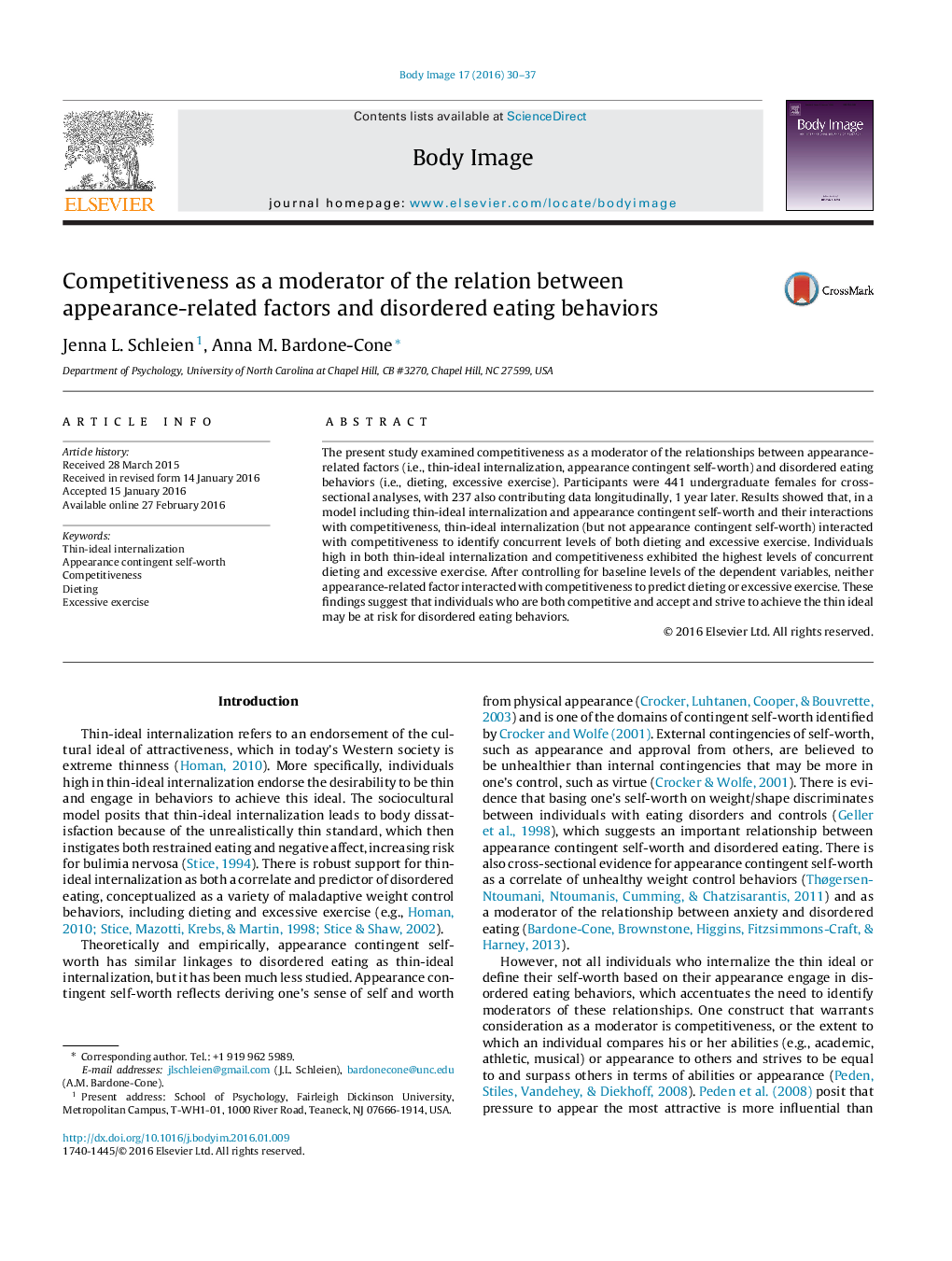| Article ID | Journal | Published Year | Pages | File Type |
|---|---|---|---|---|
| 902646 | Body Image | 2016 | 8 Pages |
•Competitiveness interacts with thin-ideal internalization for disordered eating.•Appearance contingent self-worth × competitiveness is not significant.•Interactions not significant in predicting change in dieting, excessive exercise.•Being competitive and internalizing thin ideal linked to higher dieting and exercise.
The present study examined competitiveness as a moderator of the relationships between appearance-related factors (i.e., thin-ideal internalization, appearance contingent self-worth) and disordered eating behaviors (i.e., dieting, excessive exercise). Participants were 441 undergraduate females for cross-sectional analyses, with 237 also contributing data longitudinally, 1 year later. Results showed that, in a model including thin-ideal internalization and appearance contingent self-worth and their interactions with competitiveness, thin-ideal internalization (but not appearance contingent self-worth) interacted with competitiveness to identify concurrent levels of both dieting and excessive exercise. Individuals high in both thin-ideal internalization and competitiveness exhibited the highest levels of concurrent dieting and excessive exercise. After controlling for baseline levels of the dependent variables, neither appearance-related factor interacted with competitiveness to predict dieting or excessive exercise. These findings suggest that individuals who are both competitive and accept and strive to achieve the thin ideal may be at risk for disordered eating behaviors.
